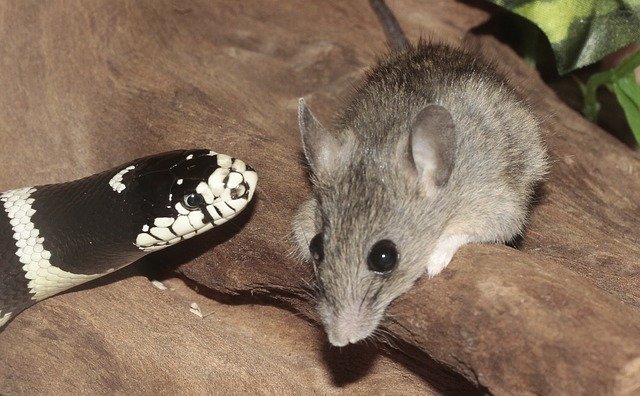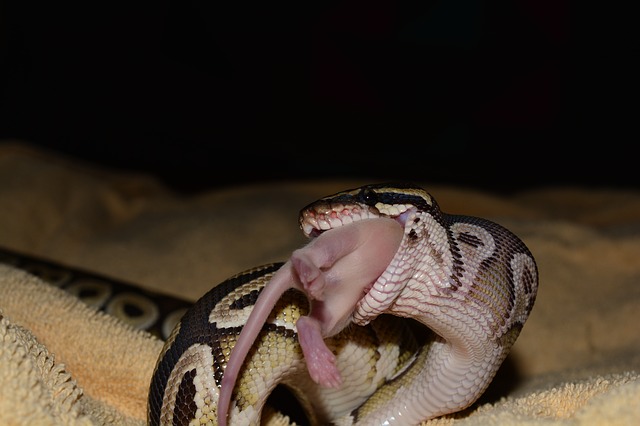Help! My Snake Won’t Eat!
December 3, 2020

My Snake Isn’t Eating, What Should I Do?
Regardless of if you have a new snake or an established snake, it is common for them to quit eating for periods of time. The important thing to remember is not to panic. Most snakes (such as ball pythons) can go between 6 months to a year without food before having any serious medical problems or passing. This is because snakes can lower their metabolism allowing them to not consume as many meals while conserving energy. There are several possible reasons as to why your snake may be refusing food. Let’s go over them, and get your snake on the right track to eating again!
Why Is My Snake Refusing Food?
My New Snake Won’t Eat
If you have just gotten a new snake and it is refusing food, it may be stressed. You shouldn't handle a new snake for the first 3 - 5 days when you bring them home. After they are settled in you may begin offering food, but do so slowly as to not scare your snake. Be patient, your snake is in a new place and may not eat the first time you offer food. Try to offer food at night, as most snakes are nocturnal and will be more likely to eat after dark. If your snake refuses food, give it a day or two before you offer food again. Sometimes offering food too often can make your snake afraid of its prey.
The Mouse May Be Too Cold
If your snake won’t eat frozen mice or rats, there is a chance that the rodent may be too cold. Some snakes, like ball pythons, use heat sensing pits to detect their food. If the temperature of the mouse or rat isn’t around 100°F they won’t recognize it as food. If you would like to learn more, I have an in-depth article on how to properly heat a mouse or rat to the appropriate temperature for your snake here.
Snake Won’t Eat Live Mouse Or Rat
If you are trying to feed live and your snake is refusing food, it may be due to PTSD. When a snake has had a traumatic experience with a mouse or rat, such as the rodent biting the snake, sometimes the snake will become afraid of its prey. A good indicator that your snake is afraid of its meal is when your snake hides its head or flinches away from it. Another sign is if your snake is striking the food but not coiling. Striking and hissing are your snake’s defensive mechanisms. When this happens, it is important to be patient with your snake. Use tongs to hold the rodent a couple of inches away from your snake. This will allow your snake to investigate, and may encourage your snake to strike and coil its meal. It may take a couple of different attempts before your snake works up the courage to eat again, just stay dedicated and patient.

Check Your Snake’s Enclosure
Having incorrect temperatures or humidity can be another common reason for a snake not eating. If a snake’s environment is too cold or too hot they will refuse food. This is because snakes are cold blooded creatures that can’t digest their food without appropriate temperatures. Undigested food leads to regurgitation, which can cause serious health problems and sometimes death. Having too low of humidity will dehydrate your snake, and a dehydrated snake will usually refuse food as well. Also, make sure your snake’s enclosure has at least two hides. Without hides and decor, your snake will feel vulnerable and will refuse food.
Baby It’s Cold Outside
In the wild, snakes go through a brumation period in the winter. Brumation is essentially the reptile version of hibernation. Much like bears preparing for hibernation, snakes will eat during the warm months, and slow down their metabolism in the cooler months to prepare for their long winter. Though snakes in captivity don't experience brumation (unless of course you decide to brumate your snake for breeding purposes) some of them still have instincts that tell them to prepare for it. If it is winter and your snake is refusing meals, this may be why. Be patient with them and continue offering meals.
Is Your Snake In Shed?
If your snake is looking a little dull, and has milky blue eyes, there is a good chance that they are about to shed. Snakes shed their skin when they’re growing (much like you change clothing sizes). This process can be uncomfortable, and can cause your snake to lose their appetite. If your snake is showing signs that they are about to shed, there is a good chance that they will refuse to eat. If this happens, simply wait until after your snake has shed to offer food again.

How To Encourage Your Snake To Eat
Now that we have looked at some possible reasons as to why your snake is refusing its meals, we need to look at some ways to encourage your snake to eat. Remember to always be patient with your snake, if you pressure them to eat too much you may make matters worse by making them afraid of their food.
- Feed in the dark at night
- Properly heat their food
- Make sure you're feeding an appropriately sized meal
- If feeding pre killed mice or rats, wiggle the prey to get your snakes interest
- Check their enclosure, humidity, and temperature levels
- Check if they're about to shed






Sending...